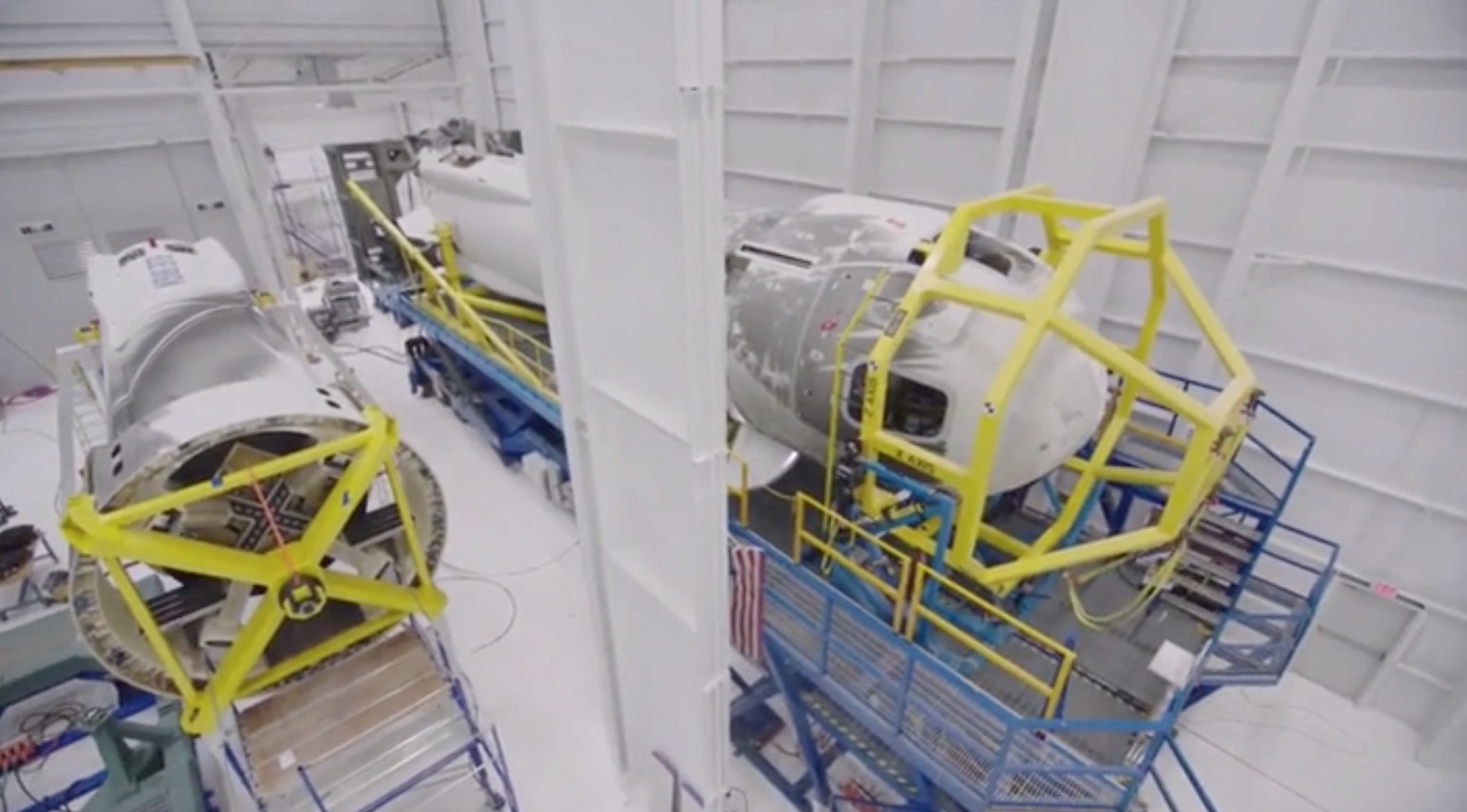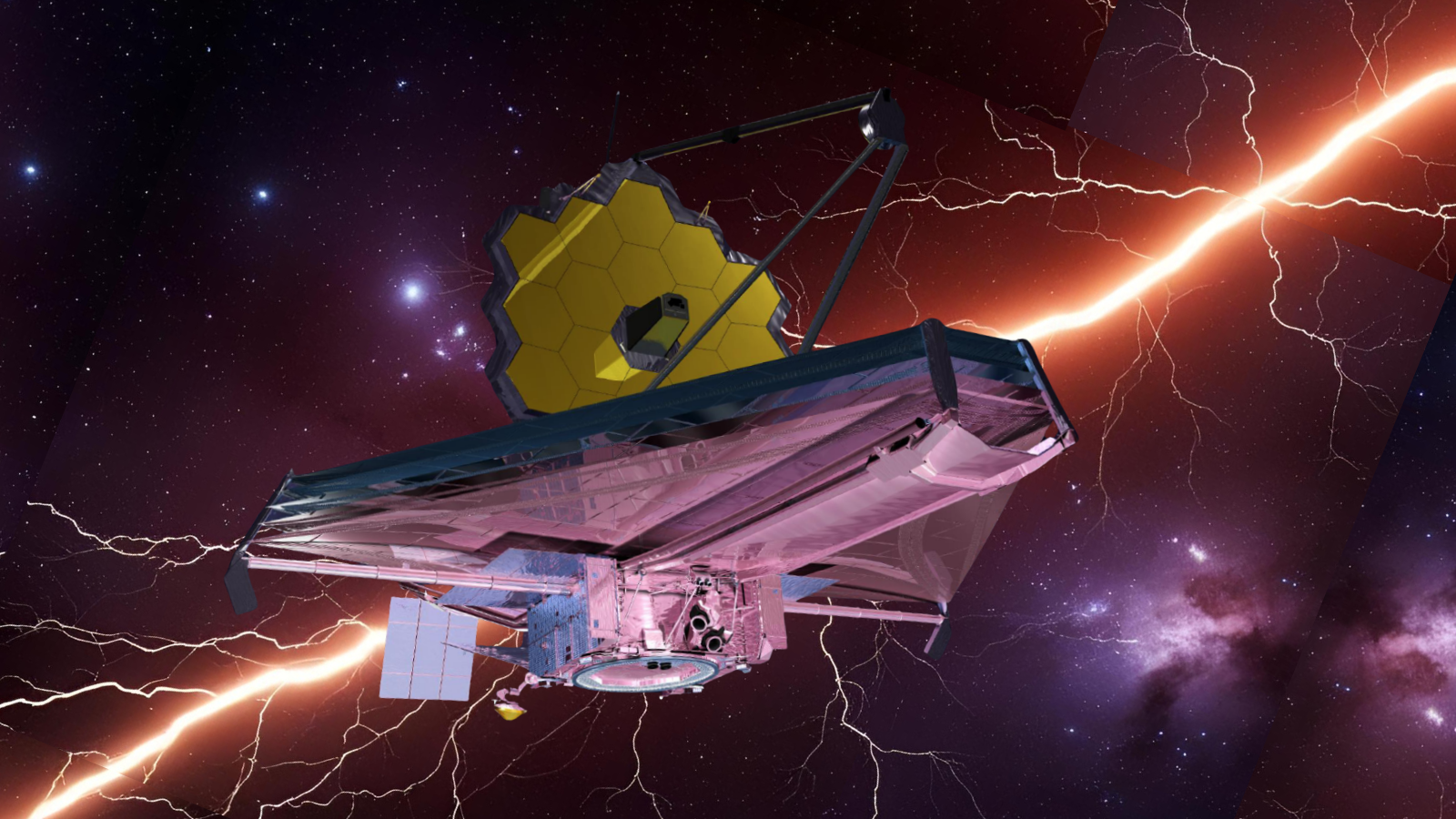Blue Origin's 1st New Shepard Rocket to Carry People Is in 'the Barn'
Today, only the Russians regularly bring people to space. By the end of 2019, several private U.S. companies could join them — including Blue Origin, which announced its intentions last week.
Blue Origin, which is owned by Amazon's Jeff Bezos, said that its human-rated rocket is in Texas in "the barn," the nickname for the vertical processing facility where technicians are readying the rocket for spaceflight.
Along with SpaceX's Dragon and Boeing's CST-100 Starliner — both of which may have human test flights this year to the International Space Station — the new Blue Origin rocket could soon offer another spaceflight option for astronauts. [Launch Photos! Blue Origin's New Shepard Soars on NS-10]
The human-rated rocket stands about 60 feet (18 meters) tall and is designed to carry six passengers in a spacecraft, according to Blue Origin's website. It is designed to accelerate to three times the speed of sound (at Mach 3), pop passengers into suborbital space, then return to Earth under parachutes to land gently in the West Texas desert.
Blue Origin's New Shepard rocket flew its 10th uncrewed test flight last Wednesday (Jan. 23), reaching another milestone on the company's road to possible human spaceflight by the end of the year, said Ariane Cornell, the company's director of astronaut and orbital sales. She showed a brief video of the journey the rocket took from Blue Origin headquarters in Kent, Washington, in early January to the processing facility in Texas onboard a 100-foot (30.5 m) truck-trailer combination.
"We are going to have rockets that are dedicated to payloads, like the one over my shoulder here, as well as rockets like the one that's in 'the barn' that is going to be flying people to space," she said during the launch broadcast. "[It's] so exciting to think that human spaceflight is just around the corner [for us]. We're aiming for the end of this year, by the end of this year, but as we have said before, we are not in a rush. We want to take our time. We want to do this right."
Blue Origin officials have disclosed timelines before, such as promising a human launch within a year of December 2017 and pledging in October 2016 to fly humans by the end of 2017. This time, Cornell said, a spaceflight doesn't feel too far away. "I think about when I was a little girl, wanting to be an astronaut. It felt like it was somewhat out of grasp, but literally, I can touch the rocket that is going to be taking people to space and — fingers crossed — maybe me one day as well."
Breaking space news, the latest updates on rocket launches, skywatching events and more!
Beyond SpaceX, Boeing and now Blue Origin, even more companies are eager to take part in human spaceflight. Britain's Virgin Galactic is a long-time front-runner; in December, the company's SpaceShipTwo breached the boundary of space, by one definition, during a test flight. Virgin hasn't announced when it plans to send tourists aloft, but that might be close.
Since 2011, most people flying to space have used the Russian Soyuz rocket and Soyuz spacecraft (the two vehicles share the same name). NASA's space shuttle program retired that year, and the U.S. agency has been working with commercial crew providers to one day provide alternative vehicles ever since.
China's National Space Administration sent its first taikonaut into space in 2003. While the agency has not sent any taikonauts into space lately, the country has flown three human missions since 2012 alone; in those missions, crew docked spacecraft with single-module space stations. The most recent taikonauts to head to space, Chen Dong and Jing Haipeng, flew for a month in 2017, and their mission included a stay on the Tiangong-2 space station.
Follow us on Twitter @Spacedotcom and on Facebook. Original article on Space.com.

Elizabeth Howell (she/her), Ph.D., was a staff writer in the spaceflight channel between 2022 and 2024 specializing in Canadian space news. She was contributing writer for Space.com for 10 years from 2012 to 2024. Elizabeth's reporting includes multiple exclusives with the White House, leading world coverage about a lost-and-found space tomato on the International Space Station, witnessing five human spaceflight launches on two continents, flying parabolic, working inside a spacesuit, and participating in a simulated Mars mission. Her latest book, "Why Am I Taller?" (ECW Press, 2022) is co-written with astronaut Dave Williams.

